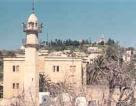
Hillel Fendel
Historian Dr. Rivka Shpak-Lissak has embarked on an ambitious project, detailing the history of Jewish towns in the Land of Israel that are now known as Arab. Seven of her articles in this series have appeared on the Omedia website, and she has many more coming.
The bottom line, Dr. Lissak told Arutz-7, is that the Arabs have not been here for thousands of years, as they claim, and that in fact most of the formerly Jewish towns of the Galilee were populated by Arabs only within the last 300 years or so. "The goal of all the rulers of the Holy Land, from the times of the Romans and onward, was always to rid the Land of the Jews," she said. "Finally, they succeeded. Many Jews simply left the Land rather than convert to Islam."
The series began last month with a short treatise on the town of Tzipori, famous from the times of the Mishna. The article noted that the Supreme Israeli-Arab Tracking Committee was preparing a "march of return" from Nazareth to Tzipori, to mark Catastrophe Day [Israel's Independence Day]. "We should remind the marchers," wrote Dr. Lissak, "that Tzipori was a Jewish city for 2,000 years, while the [adjacent] Arab village Safuriya was founded only in 1561."
Dr. Lissak was born in "the Land," she told Arutz-7, received a doctorate in history, and lectured in Tel Aviv University and Hebrew University. She has also specialized in American history.
Other originally-Jewish cities highlighted in the series include Kafr Kana, Biram, Pekiin, Sakhnin, Gush Halav, and Arabeh.
Kafr Kana
The latest article is on Kafr Kana, just north of Upper Nazareth in the Lower Galilee. Some 260 Arab families lived there in 1945, and it now has a population of 18,000 people, mostly Moslems and some Christians - leading many to forget its Jewish past. It was a Jewish city during the period of the First Temple (between 2,800 and 2,400 years ago), as well as under Persian rule during the Second Temple period several centuries later. Josephus fortified the city against the Romans in the year 66 C.E., and after Jerusalem fell, priests from the Elyashiv watch moved to Kana. Talmudic sages lived there, and tradition has it that Rava and Rav Huna are buried there. Remnants of a 4th-century synagogue have been found in Kana.
Kana continued to be a thriving Jewish town in the ensuing centuries, though Christians began to move in as well. Eighty Jewish families were reported to be living there in 1473. Rabbi Ovadiah from Bartinura, whose student visited the town, reported that he heard that its Jews, though by then a minority among Christians, were living there peacefully. Somewhere in the 17th century, Bedouin and Arab attacks, as well as Turkish taxation, forced the Jews out, and Arabs replaced them.
During the War of Independence 300 years later, Arab terrorist gangs from Kafr Kana attacked nearby Jewish towns, until the IDF conquered it in July 1948.
Gush Halav
Another now-Arab town whose roots are Jewish is Jish, north of Tzfat (Safed). Known also by its Jewish name Gush Halav, the town is mentioned in the Mishna as having been walled since the times of Joshua ben Nun - i.e., nearly 3,300 years ago. Gush Halav was the last Jewish stronghold in the Galilee and Golan region during the First Jewish Revolt against Rome (66-73 CE); its fall was described at length by Josephus.
As was the case with other towns and cities in the Galilee, a dynamic Jewish presence continued in Gush Halav well into the second half of the second millennium C.E. Archaeologists have excavated a synagogue at Gush Halav that was in use from the 3rd to 6th centuries, and a Jewish burial site similar to that at Beit She'arim has been excavated. The Prophet Joel is said to be buried in Gush Halav.
Many Jews continued to live in Gush Halav, but by the 18th century - by which time the town was renamed Jish - their number had dwindled. Maronite Christians then began arriving in Jish, joining the few Jews who still remained. In 1948, most of the population left, but Arabs from nearby villages took their place. Jish-Gush Halav now has a population of some 2,700 - none of them Jews.
(to be continued)
1 comment:
There are, of course, tons of towns & villages in Israel which today have Arabic names but which names are simply the Arabic version of the original Hebrew names. There are other towns which were not Hebrew nor Arabic but actually Roman - the most notable being "Neapolis" which today is called... Nablus. And then, there are sites which have nothing to do with the Arab incursion into the land but which names have been influenced by the Arab language - such as Banias, which is actually a temple the god Pan.
And it goes on and on and on!
Post a Comment